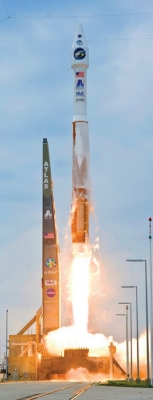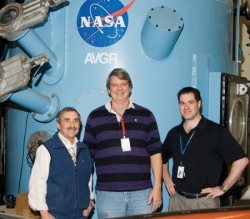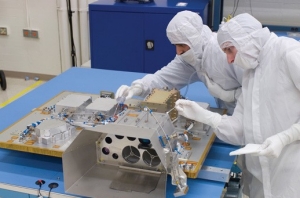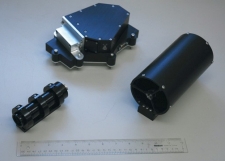UC alumnus David Landis' instruments led to discovering water on the moon
by Kim Burdett
Want to know what something is made of? Just smash it open.
That seemed to be NASA's advice in October 2009 when it hurled a satellite into the moon's surface at a speed of 5,400 miles per hour. The resulting crash into a permanently shadowed crater near the moon's south pole created a six-mile-high plume of particles that scientists say dated back to the dawn of the solar system and which had never been analyzed.
But that was about to change. The Lunar Crater Observation and Sensing Satellite (LCROSS) carried a low-cost instrument built by University of Cincinnati alumnus and scientist David Landis, A&S '90, PhD (A&S) '94, to provide long-awaited ultraviolet measurements of the dust particles.
Dubbed ALICE, Landis' spectrometer indicated the presence of hydrocarbons, hydrated materials, vapor and water-ice. The mission had confirmed the existence of water on the moon.
Finding water on the moon was critical to future exploration because humans and machinery both require it. Unfortunately, water is heavy, and transportation is expensive, costing more than $100,000 to carry a single gallon from the Earth to the moon.
According to Science magazine, NASA scientists estimate that roughly 340 pounds of water were found in the material excavated from Cabeus, the satellite's crater of impact. Scientists believe the water collected across the entire moon's surface could potentially be used to produce drinking water, oxygen for breathing, an environment for cultivating food and even hydrogen for rocket fuel on future missions to Mars.

 Past Issues
Past Issues



